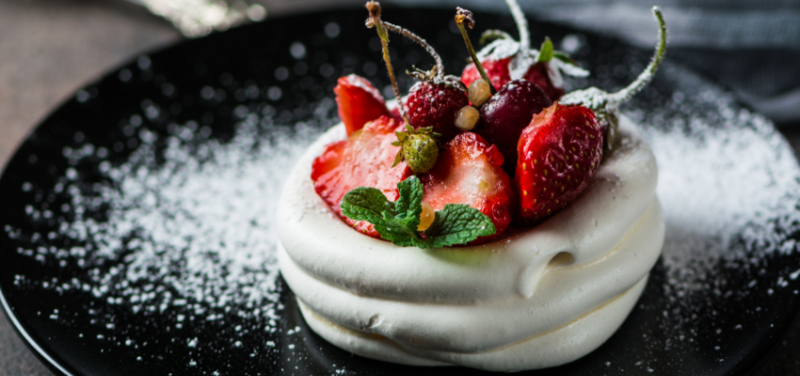Sugar has long been synonymous with pleasure. Today, however, something is changing.
The data reveals a clear shift in consumer habits: in the United States, 66% of people stated they want to reduce their sugar intake in 2024 (IFIC, 2024 Food & Health Survey), while in Europe, the European Commission forecasts a steady annual decrease of 0.2% in total sugar consumption until 2035 (European Commission, EU Agricultural Outlook 2024).
This is not a passing trend, but a true paradigm shift affecting the industry, foodservice, and consumers. A new challenge arises for desserts: maintaining the taste experience while reducing caloric and metabolic impact.
United States: demand drives change
In the United States, reducing sugar isn’t just a health fad, it’s a real response to multiple converging factors: health, nutritional awareness, and metabolic impact. According to the IFIC, the main reasons among those trying to cut back on sugar are weight control, disease prevention, and the desire to follow a "cleaner" diet (IFIC, 2024 Food & Health Survey, p. 25).
The main drivers of this transformation are a focus on well-being and the desire for authentic, meaningful ingredients, alongside a growing awareness: choosing less sugary desserts has become a way to take care of oneself every day.
The result? A growing preference for more natural desserts that still provide the same satisfaction—without the excess.
Europe: sweetness under control
In Europe too, sweetness is being reassessed. Despite a strong gastronomic culture tied to desserts, data shows a structural change in dietary behavior.
A new functional vision of dessert is emerging: one that must combine taste, lightness, and clean labels.
Interest in natural sweeteners, prebiotic fibers, and sugar-reduction-friendly technologies is growing especially in Northern and Western Europe, but is also starting to influence Mediterranean markets. The shift isn’t just about reducing sugar, but rethinking the very idea of sweetness, focusing less on quantity, more on sensory quality.
In this context, natural sweeteners are becoming the most dynamic category: according to Market Data Forecast, the European market is expected to grow from $5.21 billion in 2025 to $9.06 billion by 2033, with a compound annual growth rate of 7.16% (Market Data Forecast, 2024).
This growth is driven by multiple factors: increasingly strict regulations on artificial sweeteners, sensory preferences leaning toward more natural tastes, and strong demand for transparency in labeling. Over 70% of European consumers say they prioritize "clean label" products with no artificial additives, while nearly 60% of new food launches in Europe highlight natural ingredients (Market Data Forecast, 2024).
For foodservice, this means reformulating desserts and gelato with a new approach: less visible sugar, more flavor balance. It’s an opportunity to innovate credibly and connect with increasingly mindful out-of-home consumers.

Sugar alternatives on the plate and in the glass
Reducing sugar doesn’t mean giving up pleasure: it means making smarter choices. Foodservice is looking ahead, experimenting with ingredients that can deliver the same gratification while improving the nutritional profile.
Some of the most commonly used alternatives in the dessert sector include:
-
Stevia and monk fruit, natural and ultra low-calorie;
-
Erythritol and xylitol, valued for their sensory similarities to sucrose;
-
Prebiotic fibers and fruit purée, used in pastry and gelato for functional sweetening;
-
Fermented syrups or grain-based extracts, increasingly popular in non-alcoholic or low-alcohol cocktails.
Technologies and startups: reinventing sweetness
The future of desserts isn’t just about ingredients, it’s about the technologies that transform them. Fermentation, enzymes, molecular engineering: research now serves taste.
The goal is clear: less sugar, same delight.
Three companies are emerging with disruptive approaches:
-
Zya (USA): Uses a microbial fermentation platform to produce sweetening molecules identical to natural ones, but at lower cost and environmental impact.
-
Arboreal (India): Specializes in stevia and provides zero-calorie natural ingredients for desserts and drinks. It offers formulation support and has already worked with over 250 restaurants, aiming to make foodservice more “sugar-free.”
-
NoMy (Norway): Leverages fungal fermentation to transform agri-food waste into functional ingredients. It focuses on using mycelium (the root of fungi) via fermentation to create new sustainable ingredients, mainly protein-based, but with potential application as sugar substitutes or fiber-based carriers.
These are solutions that speak the language of creativity and open new scenarios for those designing sensory experiences in foodservice. A new inspiration kit for chefs, pastry chefs, and innovators, where technique and passion go hand in hand.
foodservice Sigep Vision trends
















